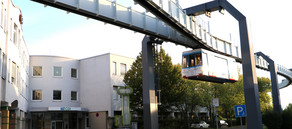MILES-HuGS - Methodological Issues in Longitudinal Educational Studies
The project examines social disparities in educational success.
Funding

Project description
Primary and Secondary Social Background Effects at Different Points of Transition in the Education System Throughout the Course of Secondary Education (MILES-HuGS) is one of five research projects funded by the German Research Foundation (Deutsche Forschungsgemeinschaft – DFG) in the research network Methodological Issues in Longitudinal Educational Studies (MILES), which is coordinated at the Leibniz Institute for Science and Mathematics Education (IPN) in Kiel under the management of Prof. Dr. Olaf Köller.

Within the scope of MILES, comprehensive data from the two Hamburg longitudinal studies LAU (Aspekte der Lernausgangslage und Lernentwicklung – Aspects of Learning Background and Learning Development) and KESS (Kompetenzen und Einstellungen von Schülerinnen und Schülern – Competencies and Attitudes of Students), are reanalysed with the objective to work in depth on different methodological and substantial aspects that are relevant in longitudinal educational research. The project MILES-HuGS focuses on social disparities in educational success.
The project addresses the development of social disparities throughout the course of secondary education. More precisely, primary (performance-related) and secondary (non-performance-related) social background effects are comparatively analysed at the four educational transition points after elementary school: after the so called observation level, after lower secondary level, and at the end of upper secondary level. The project studies how primary and secondary effects cumulate also as a function of school-track specific learning environments across the mentioned junctures in the educational career. Moreover, it examines how changes in the educational demand between LAU and KESS relate to the development of inequality patterns.
Lead researcher at IFS
Project team
- Dr. Jan Scharf (DIPF | Leibniz-Institut für Bildungsforschung und Bildungsinformation, Frankfurt a. M./Berlin)
External project partners
- Dr. Marko Neumann und Prof. Dr. Kai Maaz (DIPF | Leibniz-Institut für Bildungsforschung und Bildungsinformation, Frankfurt a. M./Berlin)
- Prof. Dr. Olaf Köller (Leibniz-Institut für die Pädagogik der Naturwissenschaften und Mathematik (IPN, Kiel))






![[Translate to English:] [Translate to English:]](/storages/ifs-ep/_processed_/8/5/csm_AdobeStock_412860748_9a2dbb816c.jpeg)
